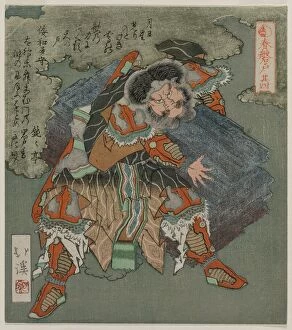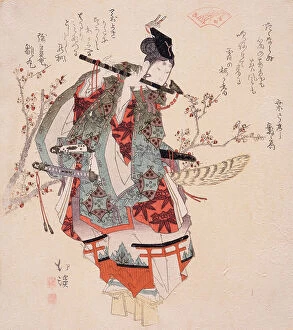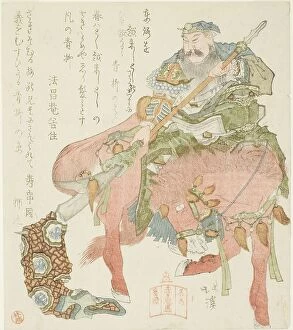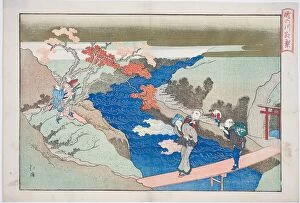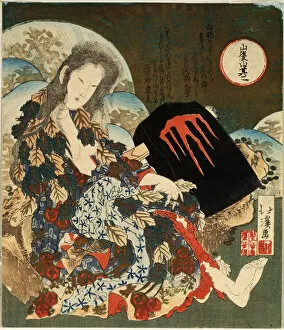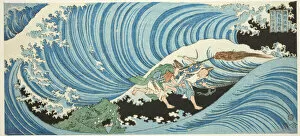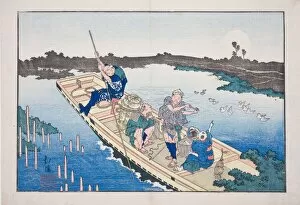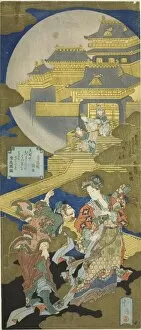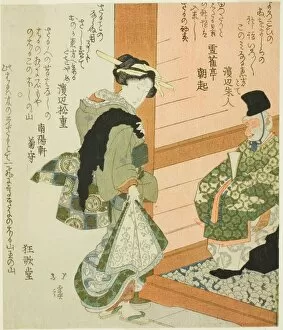Totoya Hokkei Collection
Totoya Hokkei, a renowned Japanese artist from the Edo period, left behind a rich legacy of captivating woodblock prints
All Professionally Made to Order for Quick Shipping
Totoya Hokkei, a renowned Japanese artist from the Edo period, left behind a rich legacy of captivating woodblock prints. One of his notable works is "Removing the Stone from the Entrance to the Cave (From the Series The Spring Cave), 1825. " This piece transports viewers to a serene cave setting, where an individual carefully moves aside a stone obstructing their path. Hokkei's attention to detail and mastery of composition make this print truly mesmerizing. In another masterpiece titled "Yama-uba with Kintaro, " created in the 1840s, Hokkei depicts a legendary mountain witch with her loyal companion. The intricate lines and delicate colors bring this mythical tale to life, showcasing Hokkei's ability to capture both beauty and storytelling within his art. Hokkei also excelled in creating surimono woodcuts, as seen in one such example bearing his name. These prints were often privately commissioned for special occasions or events and showcased exquisite craftsmanship. The artist's collaboration with actor Ichikawa Danjuro resulted in stunning portrayals of theatrical costumes like those seen in "Ichikawa Danjuro's costume for Shibaraku. " Created between 1818 and 1824, these prints provide insight into traditional Kabuki theater attire while highlighting Hokkei's talent for capturing movement through static images. Nature was another recurring theme in Hokkei's work; he beautifully depicted scenes such as "A Mountainous Landscape with a Stream" from 1827. Here we see nature at its finest – majestic mountains towering over tranquil waters – inviting viewers on an imaginary journey through Japan's picturesque landscapes. Hokkei also explored Chinese themes, evident in works like "Crossing the Yellow River" and "Ferry boat crossing the Sumida River. " These prints showcase his ability to incorporate foreign influences while maintaining his unique style.

